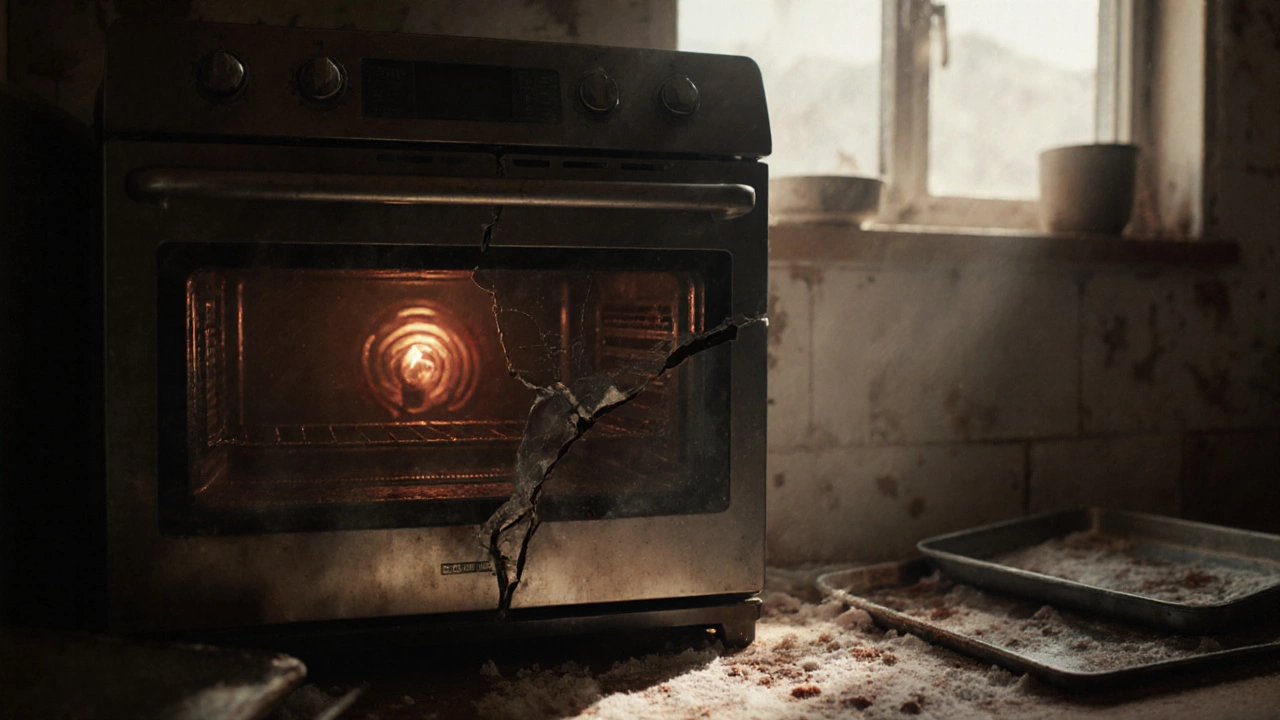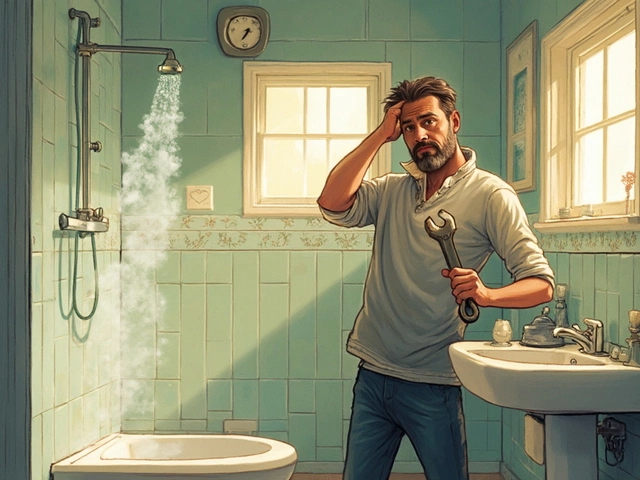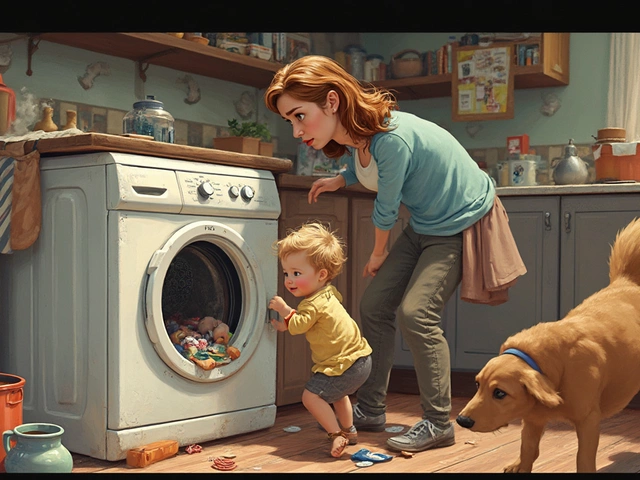Oven Repair vs Replacement Calculator
How Long Has Your Oven Lasted?
Based on article statistics, most ovens last between 10-15 years. Let's determine your next step.
Maintenance Habits
Your Oven Assessment
Most people don’t think about how long their oven will last until it stops working. Then suddenly, you’re staring at a broken heating element, a faulty thermostat, or a door that won’t seal-and wondering if it’s worth fixing. The truth is, ovens don’t last forever. But they also don’t die on day one. Knowing what to expect can save you hundreds of dollars and a lot of stress.
How Long Do Ovens Actually Last?
A typical electric or gas oven lasts between 10 and 15 years. That’s the average you’ll see from most manufacturers and appliance repair professionals. But that number isn’t magic. It’s a midpoint. Some ovens die at 8 years. Others keep going past 20.
What makes the difference? It’s not brand alone. It’s how you use it, how often you clean it, and whether you ignore small problems until they become big ones. A well-maintained oven from a mid-tier brand like Whirlpool or GE can outlive a luxury model that’s never been cleaned.
In Brisbane’s humid climate, moisture and salt air can speed up corrosion on heating elements and control panels. If your oven is over 10 years old and you live near the coast, you’re already fighting an uphill battle.
What Breaks First? The Common Failure Points
Ovens don’t just stop working all at once. They wear out in stages. Here’s what usually fails first:
- Heating elements - The most common fix. A broken top or bottom element means uneven baking or no heat at all. Replacement costs $50-$150, and it’s often worth doing if the oven is under 10 years old.
- Thermostat or temperature sensor - If your cookies burn on one side and stay raw on the other, the sensor might be off. Calibration can help, but sensors fail often after 8-12 years. Replacing one costs $80-$120.
- Door seal - A cracked or warped seal lets heat escape. You’ll notice longer cooking times and higher energy bills. Replacing the gasket is cheap ($20-$40), but if the door frame is warped, the whole door may need replacing.
- Control board or keypad - This is the death sentence for many ovens. If the display flickers, buttons don’t respond, or error codes pop up randomly, the control board might be fried. Repairing it costs $200-$400. At that point, you’re halfway to buying a new oven.
- Igniter (gas ovens only) - If your gas oven smells like gas but won’t light, the igniter is likely worn out. Replacing it costs $100-$180 and is usually a solid fix.
Here’s the rule: if the repair cost is more than half the price of a new oven, walk away. A $500 oven isn’t worth a $300 repair. But a $1,200 built-in oven? Maybe.
Signs It’s Time to Replace, Not Repair
Here are five clear signs your oven has reached the end of its life:
- It’s over 15 years old - Even if it still works, efficiency drops sharply after this point. Newer models use 15-20% less energy.
- Multiple repairs in the last two years - One fix? Fine. Two or three? You’re paying to keep a dead machine alive.
- Uneven cooking despite repairs - If you’re constantly rotating pans or using a separate oven thermometer, the oven’s internal design is failing.
- High energy bills - If your electricity or gas bill jumped 20%+ without changing usage, your oven is leaking heat or cycling too often.
- Visible rust or warping - Rust on the interior walls or a door that doesn’t close flush means structural damage. This isn’t fixable with a part.
One client in Redcliffe had a 19-year-old oven that still worked. But every time she baked bread, the kitchen got so hot she had to open the windows. She replaced it with a new convection model. Her energy bill dropped by $18 a month. Payback time? Less than a year.
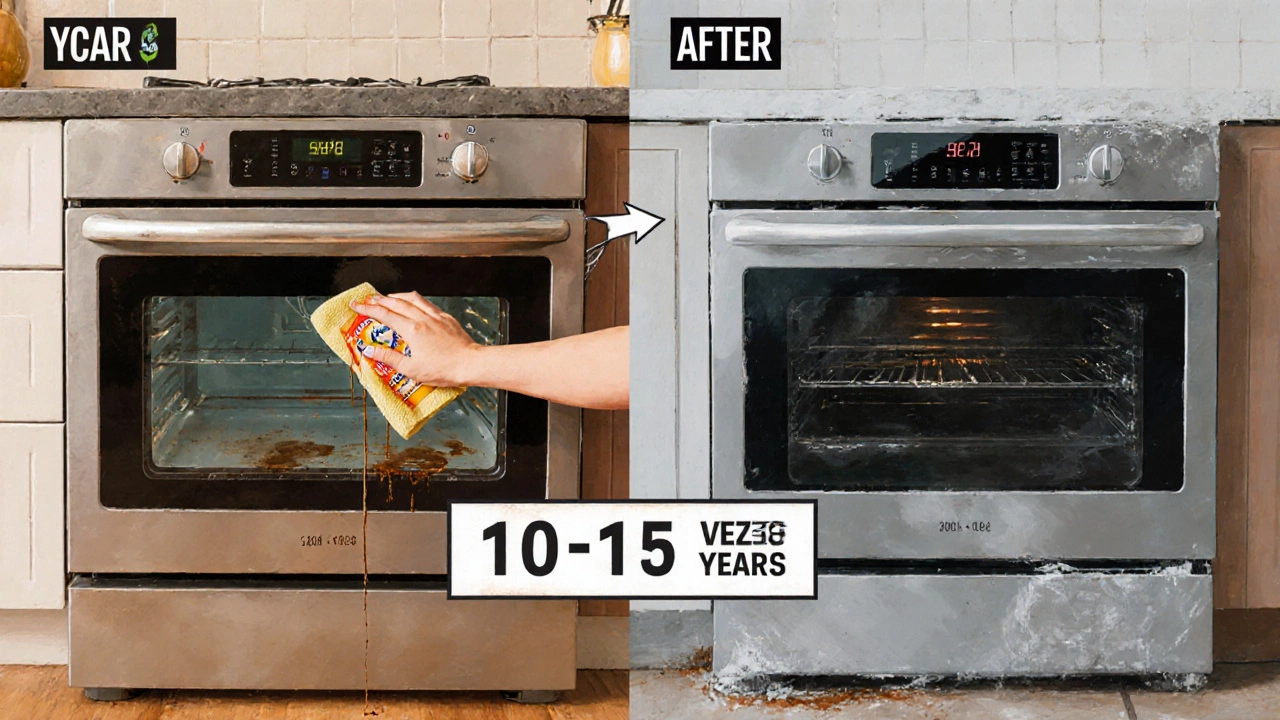
How to Make Your Oven Last Longer
There’s no magic trick. But there are simple habits that add years:
- Clean spills right away - Burnt-on food creates corrosive acids that eat away at metal. Wipe spills with warm water and baking soda while the oven is still warm.
- Don’t use self-clean mode too often - The 900°F cycle stresses the heating elements and seals. Use it once a year, max. Manual cleaning is gentler.
- Check the door seal yearly - Slide a dollar bill between the door and frame. If it pulls out easily, the seal is worn. Replace it.
- Don’t overload the racks - Heavy pots can warp the bottom element or damage the support rails.
- Use the right cookware - Dark, heavy pans absorb more heat and can cause the oven to overwork. Light-colored aluminum or glass is easier on the system.
These steps won’t make your oven last 30 years. But they can easily add 3-5 years to its life. That’s like getting a free upgrade.
When to Buy a New Oven
It’s not just about age. It’s about what you need now.
If you bake often, consider a convection oven. It circulates heat, cuts cooking time by 25%, and gives even results. If you cook for a big family, a double oven gives flexibility. Smart ovens with Wi-Fi and pre-programmed settings are nice, but not essential.
For most households, a reliable mid-range oven costs between $600 and $1,000. That includes basic features like even heating, a good warranty, and easy-to-clean enamel interiors. You don’t need to spend $2,000 unless you’re building a luxury kitchen.
Look for models with a 5-year parts warranty. That tells you the manufacturer believes in its build quality. Avoid brands with a history of control board failures - check online forums for recurring complaints.
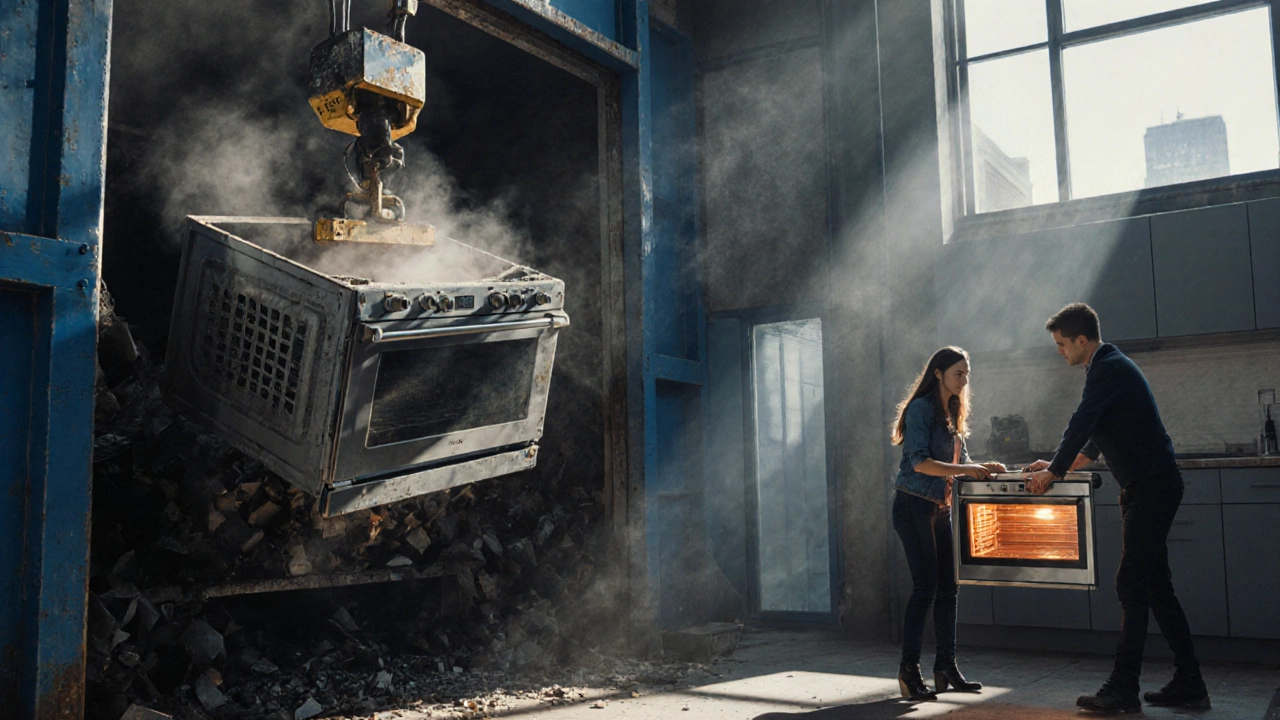
What to Do With Your Old Oven
Don’t just leave it on the curb. Many councils in Brisbane offer free appliance recycling. Some even pick it up for free if you buy a new one from a local retailer.
Scrap metal recyclers will take it too. The copper wiring and steel casing have value. You might even get $20-$50 back. And if your oven still works? Donate it. Groups like The Salvation Army or local community kitchens always need working appliances.
Don’t let an old oven become landfill. Recycling it keeps heavy metals out of soil and reduces the need for new raw materials.
Final Thought: It’s Not a Mystery, It’s a Pattern
Ovens don’t die randomly. They die from neglect, abuse, or age. If your oven is 12 years old and the heating element just broke, you’re not unlucky. You’re overdue. Fixing it now might give you another year. But you’re just delaying the inevitable.
Plan ahead. Track when you bought your oven. Write the date on a sticky note and stick it on the door. When it hits 10 years, start watching for warning signs. By the time it hits 12, you’ll know if it’s worth repairing - or if it’s time to shop for a new one.
There’s no shame in replacing an oven. But there’s a big cost to waiting too long.
How long does a gas oven last compared to an electric one?
Gas and electric ovens have very similar lifespans - both typically last 10 to 15 years. Electric ovens tend to have simpler internal parts, so they’re slightly easier to repair. Gas ovens have more moving parts like igniters and valves, which can fail more often, but those repairs are usually cheap. Neither type lasts significantly longer than the other.
Is it worth repairing a 15-year-old oven?
Generally, no. By 15 years, most ovens are operating at 30-40% efficiency compared to new models. Even if a repair fixes the immediate problem, other parts are likely to fail soon. The cost of parts and labor often exceeds 50% of a new oven’s price. Unless it’s a high-end built-in model, replacement is the smarter choice.
Can I extend my oven’s life by using it less?
Not really. Ovens wear out from use, yes - but also from age. The heating elements, seals, and electronics degrade over time, even if the oven sits idle. The key isn’t using it less. It’s maintaining it well. Clean it regularly, check the door seal, and don’t ignore small issues. A used oven that’s well cared for lasts longer than a rarely used one that’s neglected.
Do smart ovens last longer than traditional ones?
No. Smart features like Wi-Fi, touchscreens, and app controls add complexity, not durability. In fact, the electronic components in smart ovens often fail sooner than basic mechanical parts. A traditional oven with a simple thermostat and dial controls is more likely to last 15+ years. Smart features are convenient, but they’re not built to last.
What’s the most common reason ovens fail?
The most common cause is worn-out heating elements, especially in electric ovens. But the second most common reason? Neglect. Spills left to bake on, dirty door seals, and skipping regular cleaning lead to corrosion, uneven heat, and stress on internal parts. Many ovens fail not because they’re old - but because they weren’t maintained.
